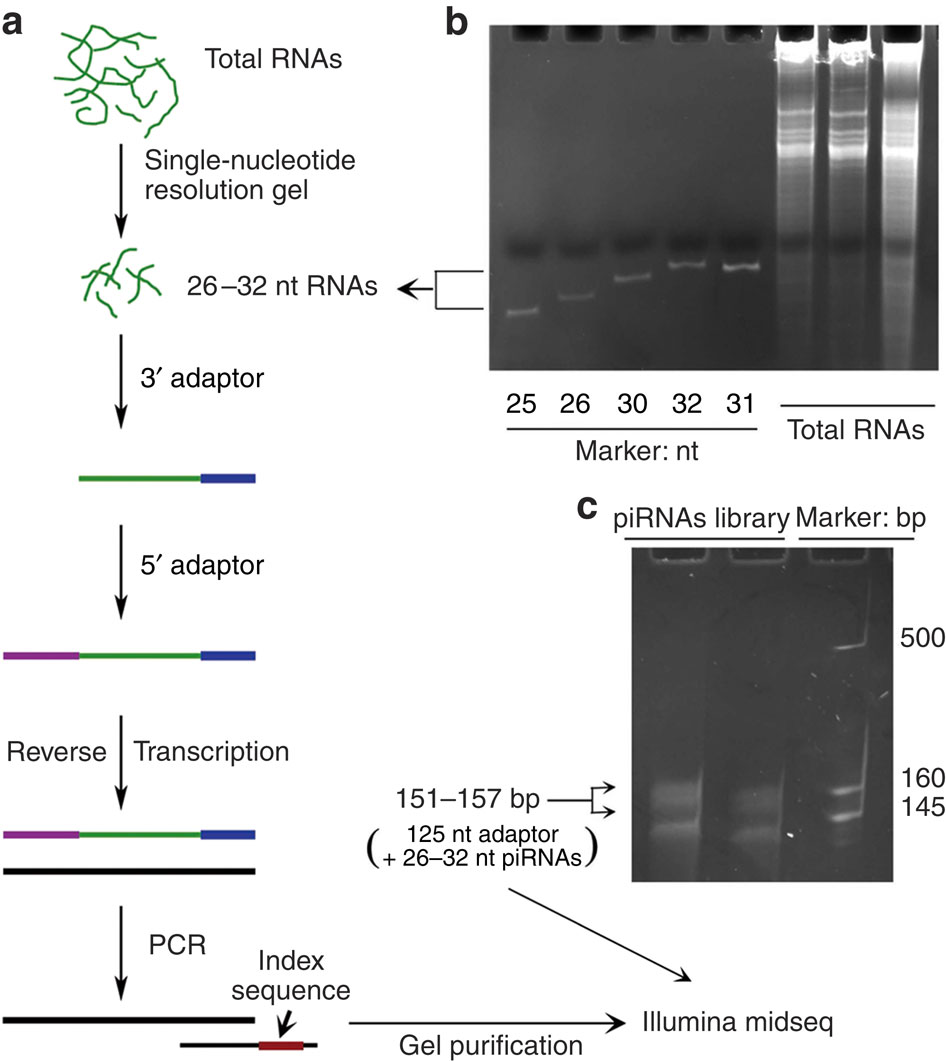当前位置:
X-MOL 学术
›
Nat. Commun.
›
论文详情
Our official English website, www.x-mol.net, welcomes your
feedback! (Note: you will need to create a separate account there.)
A piRNA-like small RNA interacts with and modulates p-ERM proteins in human somatic cells.
Nature Communications ( IF 14.7 ) Pub Date : 2015-Jun-22 , DOI: 10.1038/ncomms8316 Yuping Mei , Yuyan Wang , Priti Kumari , Amol Carl Shetty , David Clark , Tyler Gable , Alexander D. MacKerell , Mark Z. Ma , David J. Weber , Austin J. Yang , Martin J. Edelman , Li Mao
Nature Communications ( IF 14.7 ) Pub Date : 2015-Jun-22 , DOI: 10.1038/ncomms8316 Yuping Mei , Yuyan Wang , Priti Kumari , Amol Carl Shetty , David Clark , Tyler Gable , Alexander D. MacKerell , Mark Z. Ma , David J. Weber , Austin J. Yang , Martin J. Edelman , Li Mao

|
PIWI-interacting RNAs (piRNAs) are thought to silence transposon and gene expression during development. However, the roles of piRNAs in somatic tissues are largely unknown. Here we report the identification of 555 piRNAs in human lung bronchial epithelial (HBE) and non-small cell lung cancer (NSCLC) cell lines, including 295 that do not exist in databases termed as piRNA-like sncRNAs or piRNA-Ls. Distinctive piRNA/piRNA-L expression patterns are observed between HBE and NSCLC cells. piRNA-like-163 (piR-L-163), the top downregulated piRNA-L in NSCLC cells, binds directly to phosphorylated ERM proteins (p-ERM), which is dependent on the central part of UUNNUUUNNUU motif in piR-L-163 and the RRRKPDT element in ERM. The piR-L-163/p-ERM interaction is critical for p-ERM's binding capability to filamentous actin (F-actin) and ERM-binding phosphoprotein 50 (EBP50). Thus, piRNA/piRNA-L may play a regulatory role through direct interaction with proteins in physiological and pathophysiological conditions.
中文翻译:

类似于piRNA的小RNA与人体细胞中的p-ERM蛋白相互作用并对其进行调节。
与PIWI相互作用的RNA(piRNA)被认为可以在发育过程中沉默转座子和基因表达。然而,piRNA在体细胞组织中的作用在很大程度上是未知的。在这里,我们报告鉴定在人肺支气管上皮(HBE)和非小细胞肺癌(NSCLC)细胞系中的555个piRNA,包括在称为piRNA样sncRNA或piRNA-Ls的数据库中不存在的295个piRNA。在HBE和NSCLC细胞之间观察到明显的piRNA / piRNA-L表达模式。piRNA-like-163(piR-L-163)是NSCLC细胞中上调最严重的piRNA-L,直接与磷酸化的ERM蛋白(p-ERM)结合,后者依赖于piR-L- 163和ERM中的RRRRKPDT元素。piR-L-163 / p-ERM相互作用对于p-ERM'至关重要 对丝状肌动蛋白(F-actin)和ERM结合磷蛋白50(EBP50)的结合能力。因此,在生理和病理生理条件下,piRNA / piRNA-L可能通过与蛋白质直接相互作用而发挥调节作用。
更新日期:2015-06-24
中文翻译:

类似于piRNA的小RNA与人体细胞中的p-ERM蛋白相互作用并对其进行调节。
与PIWI相互作用的RNA(piRNA)被认为可以在发育过程中沉默转座子和基因表达。然而,piRNA在体细胞组织中的作用在很大程度上是未知的。在这里,我们报告鉴定在人肺支气管上皮(HBE)和非小细胞肺癌(NSCLC)细胞系中的555个piRNA,包括在称为piRNA样sncRNA或piRNA-Ls的数据库中不存在的295个piRNA。在HBE和NSCLC细胞之间观察到明显的piRNA / piRNA-L表达模式。piRNA-like-163(piR-L-163)是NSCLC细胞中上调最严重的piRNA-L,直接与磷酸化的ERM蛋白(p-ERM)结合,后者依赖于piR-L- 163和ERM中的RRRRKPDT元素。piR-L-163 / p-ERM相互作用对于p-ERM'至关重要 对丝状肌动蛋白(F-actin)和ERM结合磷蛋白50(EBP50)的结合能力。因此,在生理和病理生理条件下,piRNA / piRNA-L可能通过与蛋白质直接相互作用而发挥调节作用。





















































 京公网安备 11010802027423号
京公网安备 11010802027423号